Fishes are beautiful creatures with some of the most beautiful and vibrant colors in nature. Fishes are also food for man and other creatures; they are good sources of protein.
In addition, they are aquatic animals that can beautify our homes and lives. They are perfect for home decor.
Even though fishes have many uses which benefit us, we tend to pay little attention to them (probably because they are mostly in water). However, there is more to fishes than their uses.
We will delve into an interesting aspect of some fish — the length of their names. In this article, we will look at five fish with long names.
Are you familiar with fish species in your locality? Are you native to a land that has broad knowledge of fish? Or are you in the middle?
Regardless of the category you are in, I have got you covered!
Table of Contents
5 Fishes with Long Names: Which of these Five Are You Familiar With?
1. Eastern Australian Salmon
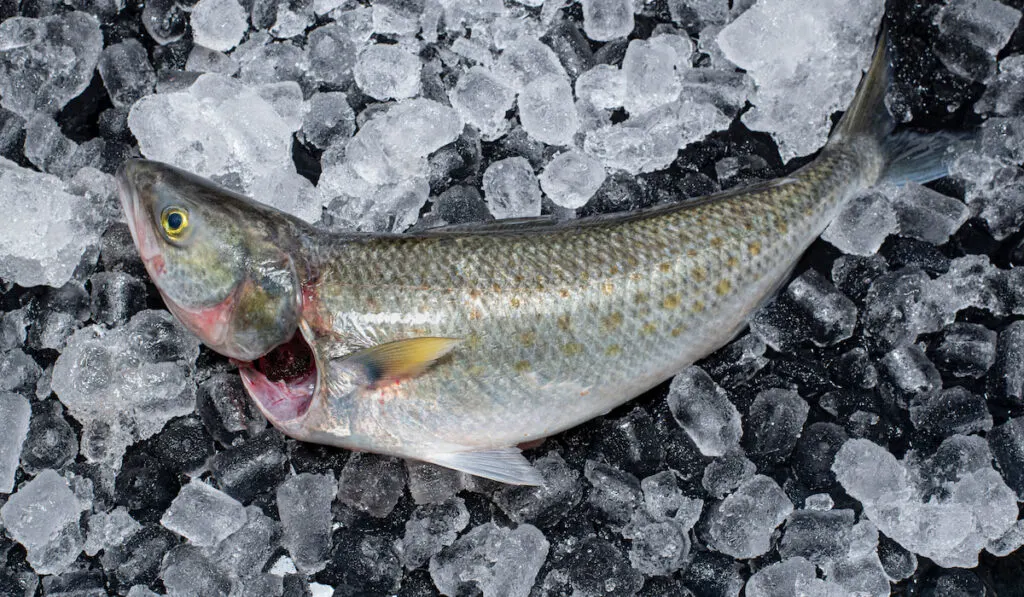
Scientific name: Arripis trutta
Classification: Marine
The two species of Australian salmon are:
- Eastern Australian Salmon (Arripis trutta).
- Western Australian Salmon (Arripis truttaceus).
For this content, our focus will be on the Eastern Australian species.
Australian salmon are wild-caught fish. They are very different from Atlantic salmon, which have pinkish-orange flesh.
The major difference between wild salmon and farmed salmon is in how they are raised.
Farmed salmon are more intensely raised and the hatchery carefully monitors their diet. Whereas wild salmon like these Australian species roam between freshwater and the open ocean.
Description:
So, how would you recognize an Australian salmon?
It has a long and slender body with small eyes and a large mouth. The body color varies from grayish green to steely blue, with a silvery white underbelly. The pectoral fins are yellow.
It weighs up to 9.4 kg (20.7 pounds), with a length of 90 cm (35.4 inches).
The presence of 33-40 gill rakes differentiates an Eastern Australian salmon from a Western Australian salmon.
Habitat:
As we said earlier, the Australian salmon is a wild-caught fish that can swim across oceans.
The juveniles are usually found in bays and estuaries. The adults are found off oceanic beaches and in coastal waters, specifically those in these locations:
- Queensland
- Western Victoria
- Northern Zarmania
- New Zealand
Edibility:
Australian salmon are edible. As long as they are fresh and well-cooked, they are delicious. Although they may be undervalued by chefs and consumers, they still serve as a source of omega-3 fatty acids.
Fun Facts:
Although it is called Australian salmon, it is not related to true salmons. It belongs to the family Arripidae, a group of salmon-shaped fish.
Australian salmon can live up to 9 years.
2. Black Phantom Tetra
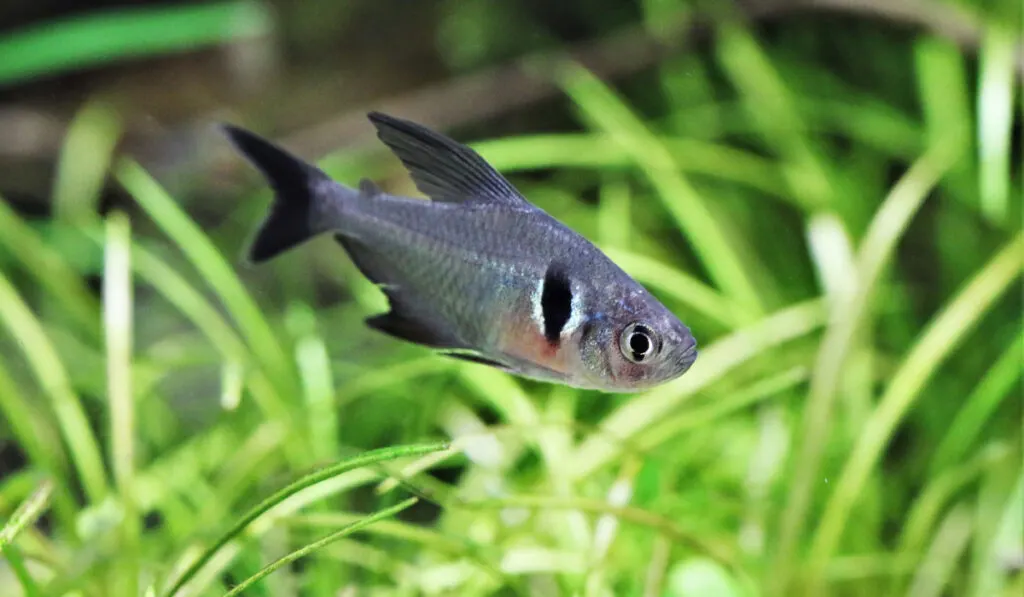
Scientific name: Megalamphodus megalopterus
Yes, it really is called a black phantom tetra.
Naturally, I would have thought it would be a dark, scary, violent fish. Are such thoughts running through your mind?
Well, not to burst your bubble, but this particular phantom tetra is quiet, non-aggressive, and popular among aquarists. Black phantom tetras are popular because they’re easy to care for.
Their name distinguishes them from other tetras: red phantom tetra, neon tetra, and lemon tetra, amongst others.
Description:
The presence of a dark black band behind their gills is a good way to recognize them, but it is not distinct enough.
The black tetra has a tetragonal shape, with a flat and silvery body.
The table below gives a concise description of the color variations in male and female black tetra.
| Female | Male | |
| Dorsal fin | More black | Black |
| Pelvic, anal, adipose fins | Red | Grey |
| Fins | Shorter and smaller | Longer |
With proper care, like every other species, black phantom tetras can live up to five years or more!
Habitat:
Black tetras are generally found in South America and between Bolivia and Brazilian borders. You can easily add them to your collection because they are widely distributed.
Diet:
Black tetras are omnivores and are definitely not picky eaters. Their diet could consist of tiny insects, crustaceans, fish-flake foods, and micro pellet feeds, amongst others.
Edibility:
Black tetras are not raised for food.
Classification:
Freshwater
Fun Fact:
The name comes from their appearance, which is characterized by a dark black band. This black band is similar to an eye-shaped marking behind the gills.
3. Chocolate Gourami

Scientific name: Sphaerichthys osphromenoides
Classification: Freshwater
Voila! Here is our chocolate fish on the list!
The name comes from their commonly brown body.
The chocolate gourami is a very interesting species. Starting with the sweet name it bears, coupled with its gentleness and shyness, it seems like a desirable species.
The name won my heart, just as it may be winning yours too.
However, the gentle nature chocolate gouramis have implies they need to be specially cared for by their owners. As well, with proper handling and all healthy measures taken into consideration, they could live up to 5–8 years.
Their peaceful nature makes them a welcome addition to aquariums.
Description:
- It has a flat, oval-shaped body.
- Its mouth looks pointed.
- It has a small head.
- Its body is shades of brown with yellow vertical stripes.
- The shades of brown can vary from reddish brown to greenish brown.
- It has long fins with yellow edges.
Length: 6.35 cm (2.5 inches).
Distribution:
Chocolate gourami is a tropical freshwater fish that originates from countries like Borneo, Sumatra, and Malaysia.
Habitat:
- Clear water
- Blackwater peat swamps
- Clear water with lake sediments
Diet and Feeding Habits:
Chocolate gouramis are omnivores. Their diet can include the following:
- Zooplankton
- Algae
- Mosquito larvae
- Worm
- Brine shrimp
Most importantly, they prefer meat or other fleshly food items.
Edibility:
They are mainly raised for aquariums.
Fun Fact:
Chocolate gourami are mouth breeders! A mouth-breeding fish, as the name implies, is simply a fish that breeds its offspring in its mouth.
4. Slender Rainbow Sardine
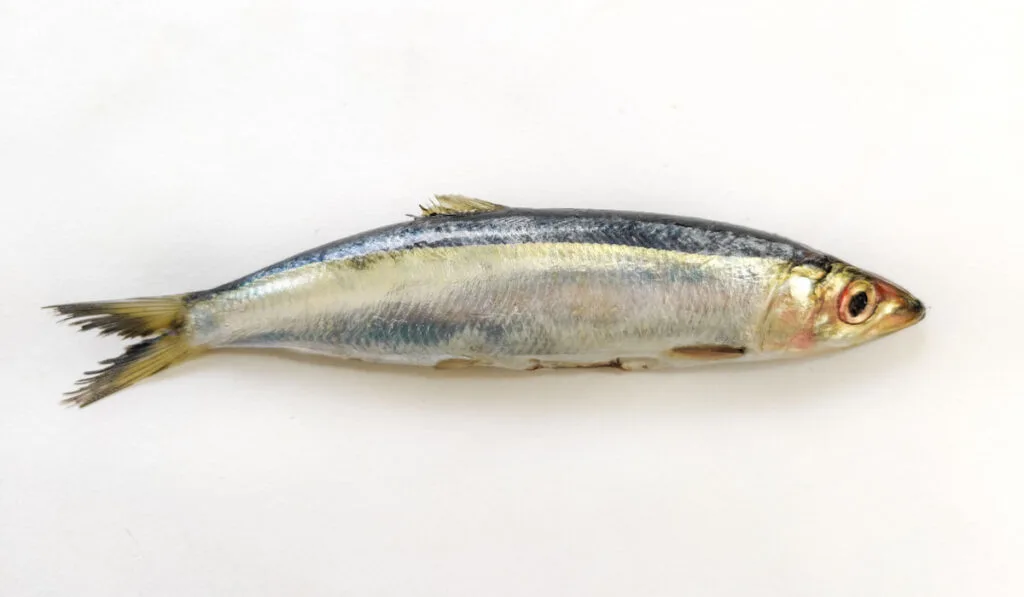
Scientific name: Dussumieria elopsoides
Classification: Saltwater
This fish has rainbow in its name, but does this fish have any relationship with a rainbow?
We will soon find out.
There is one thing I love about fish: their names are not random. No matter how bizarre the name of a fish sounds, there is always a link to either the source, family, or appearance.
Description:
You are probably itching to find out the missing link between this fish and rainbows.
Slender rainbow sardines do not have a rainbow color. Instead, they are silvery on the sides with a bluish-grey color on the back and a lighter shade on the bottom. Also, the body is elongated.
The size of a slender rainbow sardine ranges between 8 cm to 18cm (3.14 to 7.08 inches).
The slender rainbow sardine is similar to the rainbow sardine, which is also a bony fish with a shimmery blue body color. It is different from slender rainbow sardine in two ways:
- The rainbow sardine is wider than the slender rainbow sardine.
- The rainbow sardine has tiny radiating striae on its posterior scales, which the slender rainbow sardine does not have.
Distribution and Habitat:
The range of distribution is quite wide. Thus, I will mention four locations they inhabit:
- Tropical and subtropical portions of the Indian Ocean
- The South China Sea
- East Asian waters
- Mediterranean sea
Edibility:
Yes, it is edible.
Fun Fact:
The slender rainbow sardine can be used as a baitfish and can serve as food for human consumption!
5. Largemouth Bass
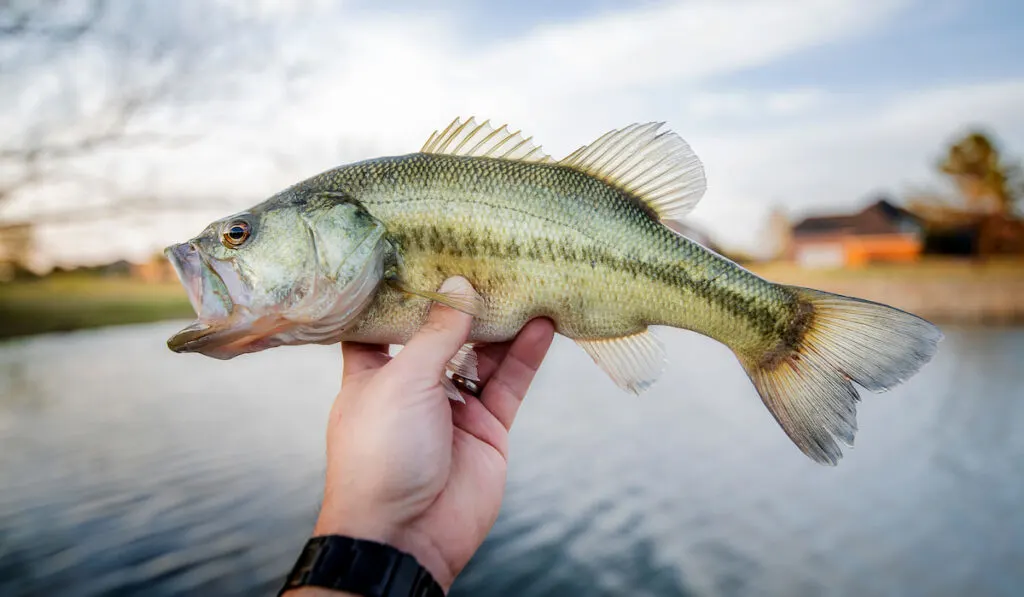
Scientific name: Micropterus salmoides
Classification: Freshwater
The largemouth bass is the king of all the black basses. It is a well-prized sport fish that can be caught for consumption or recreational purposes.
The name is derived from its large mouth. Due to the wideness of its mouth, it is called other names such as:
- Bucketmouth largies
- Widemouth bass
- Bucketmouth bass
- Big mouth bass
Do not fret; its mouth isn’t large enough to eat a whole human being.
The largemouth bass’s mouth is a key characteristic feature. There is another fish belonging to the same genus that is quite similar to the largemouth bass, called the smallmouth bass. It is also a popular fish and it is similar in appearance, but its upper jaw ends below the eye.
Description:
We have read much about the mouth of this fish, but that is not all there is to it.
You can distinguish this fish by its greenish-black body. The color could vary from green to light olive green with dark blotches that form a horizontal line on either side of the fish.
Since it is the largest of all basses, a largemouth bass reaches a maximum length of 75 cm (29.5 inches) and weighs 11.4 kg (25.1 pounds) at most.
Average lifespan: 10–16 years.
Diet:
Juvenile largemouth bass mainly consumes:
- Small insects
- Baitfish
- Shrimp
- Scuds
As the bass grows into an adult, its diet changes progressively, and it could feed on larger creatures like:
- Snails
- Snakes
- Bats
- Salamanders
- Smaller fish (e.g., bluegill)
- And anything else that could enter its mouth!
Habitat:
Largemouth bass are widely distributed. They can be in many parts of North America. Their typical habitat is a lake or pond with an abundance of vegetation.
Edibility:
Yes, it is edible.
Fun Fact:
The upper part of the mouth of a largemouth bass extends past its eye!
The Fish With the Longest Name
The fish with the longest name is lauwiliwilinukunuku’oi’oi.
It is a Hawaiian word for the yellow longnose butterflyfish. It contains 23 letters with two apostrophes, which are called ‘okina’ in Hawaiian.
In the Hawaiian lettering system, the ‘okina’ is a letter. By extension, we have 23 letters and two okina. This makes up a total of 25 letters!
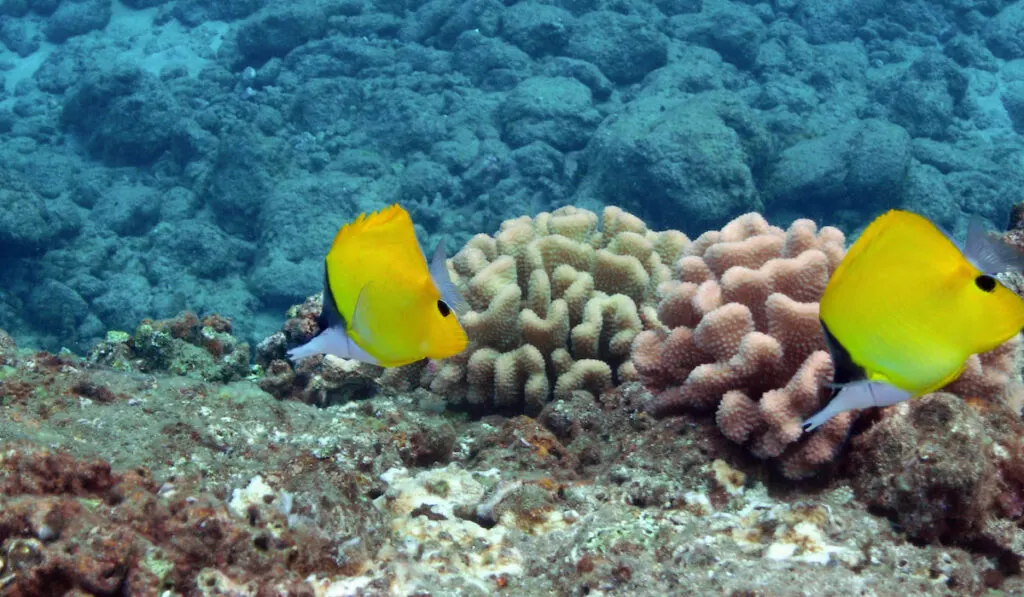
Is It Fish or Fishes?
I felt the need to point out the logic behind the usage of “fish” and “fishes.”
We might naturally think that if there is more than one fish, it should be called fishes.
Well, this could be true, but it is largely dependent on the difference in the species.
“Fish” could be used as both a singular noun and a plural noun to describe a single fish and multiple ones from a single species.
The word “fishes” is used to describe entities of different species.
So, if a pond contains 100 salmon, we would say it has 100 fish. But if the pond has 80 salmon and 20 bass, we would say it has 100 fishes, as the total is of different species.
Conclusion
There are several species of fishes scattered all over the world. These fascinating aquatic creatures are not just limited to consumption alone; it will go a long way if we pay more attention to them.
Not every fish with an unusual name is poisonous or rare. Some species are native to certain regions and countries. If you are not an inhabitant of such areas, you might never get wind of these species.
With more attention from you and me, we could discover a whole lot about fishes, even the ones we have not seen. Trust me, these creatures are interesting!
Resources
I used my personal knowledge of fishes, their terminology, and the sources listed below to write this article.
- https://prideofbristolbay.com/blogs/the-daily-catch/what-type-of-salmon-is-the-healthiest-to-eat
- https://www.sydneyfishmarket.com.au/Home/Seafood/Species-Information/List/Australian-Salmon
- https://www.fish.gov.au/Archived-Reports/2012/reports/finfish/pages/australian_salmon.aspx.html
- https://en.m.wikipedia.org/wiki/Arripis
- https://www.thesprucepets.com/black-phantom-tetra-1381828#toc-characteristics
- https://en.m.wikipedia.org/wiki/Black_phantom_tetra
- https://www.thesprucepets.com/chocolate-gourami-1381022
- https://en.m.wikipedia.org/wiki/Slender_rainbow_sardine
- https://en.m.wikipedia.org/wiki/Largemouth_bass
- https://wdfw.wa.gov/species-habitats/species/micropterus-salmoides#howto
- https://en.m.wikipedia.org/wiki/%CA%BBOkina
- https://en.m.wikipedia.org/wiki/Lauwiliwilinukunuku
